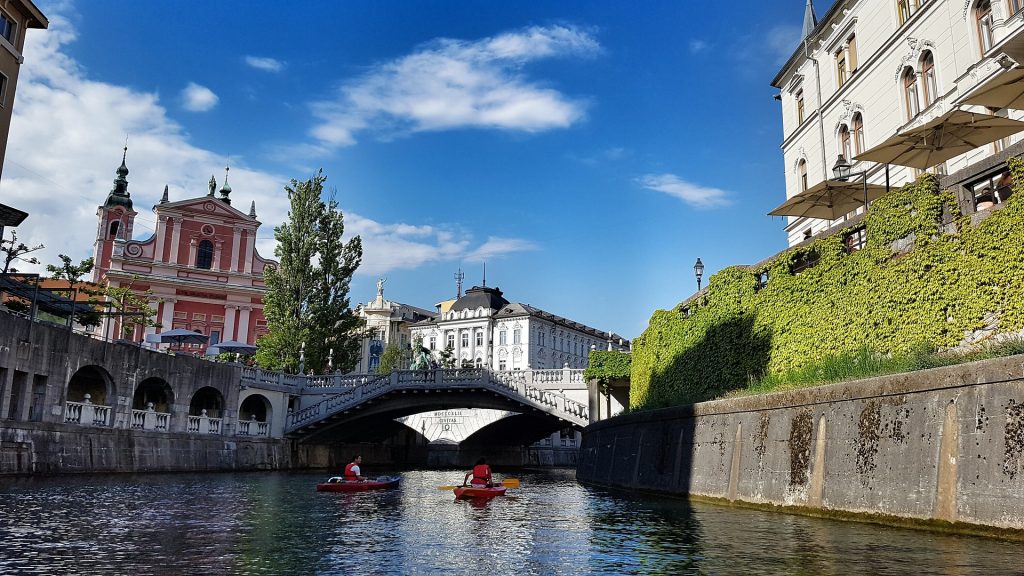May the 14th, 2024 – The Croatian standard may have improved overall, but it’s severely lagging behind that of neighbouring Slovenia. The Slovenian standard is now close to what is typical of the UK and France.
As Poslovni Dnevnik/Sinisa Malus writes, according to the latest projections of the International Monetary Fund (IMF), Slovenian standards will overtake those of Italy by 2029. This is owing to the expected difference in economic growth rates, both in terms of GDP per capita and in terms of purchasing power. Slovenia’s average standard will end up being far closer to that enjoyed by European powers like the United Kingdom and France.
According to this indicator, the Slovenians are already ahead of Greece, Portugal and Spain. After this year’s real GDP growth of 2%, the IMF predicts a strengthening of economic activity of 2.5% in 2025 in Slovenia, and then around 2.7% for the following years.
Although lower than in the years before the outbreak of the coronavirus pandemic and with the recovery period of 2021, according to the fund’s forecasts, these economic dynamics will significantly surpass those of the EU countries in the west and south of Europe. That will gradually reduce Slovenia’s development gap with the most developed countries in Europe. Unfortunately, the same cannot be said for the Croatian standard despite significant and in some cases very rapid improvements.
Slovenian GDP per capita, expressed in purchasing power parity standards, stopped at $53,290 this year. It should however reach $66,680 in 2029, if these IMF forecasts end up coming to fruition.
This would be more than the expected value of this indicator for Italy, for which the purchasing power standard is expected to increase from $56,910 this year to $64,830 in 2029. It should also be noted that the development differences within Italy are large and that its northern part is mostly one of the more developed areas in Europe, while the south is still markedly underdeveloped.
Slovenia and Italy aren’t our focus, however, but as neighbouring countries there is a lot the Croatian standard should be aspiring to reach. For us here in Croatia, which joined the European Union back in 2013, GDP per capita according to purchasing power will reach $45,700 this year. That’s according to the IMF’s current forecasts, while growth to $57,650 is projected for 2029. As stated, the general Croatian standard has a lot of catching up to do.
By 2029, neighbouring Slovenia should come much closer to enormous European powers such as France and the United Kingdom in terms of GDP per inhabitant and purchasing power. In France, that indicator is set to increase from $60,340 this year to $70,150 in 2029. In the United Kingdom, it is expected to rise from $58,880 to $68,700. Some time ago, according to this criterion, Slovenia overtook nearby Greece, Portugal and Spain.
Although Slovenia is the leader among the Central European countries by standard, it will still remain quite significantly behind Austria, Germany and most of the other EU countries in northwestern and northern Europe, where the mentioned indicator is close to or above $80,000.
In general, Central Europe is rapidly catching up with the West. Poland, for example, is rapidly reducing the development gap with some western and southern European EU nations, where GDP per capita is expected to increase according to purchasing power standards from $49,060 in 2024 to $63,450 by 2029. Strong growth should also be recorded by Lithuania, with an increase from $50,600 to $64,790. The same is also expected in the Czech Republic, with an increase from $50,470 to $62,600.
The Croatian standard has evolved over more recent years, and enormous steps forward have been taken in general, be they regarding pensions, wages or reforms. It seems however that Zagreb’s close proximity to Slovenia means very little, if anything at all, when looking at these impressive figures for Croatia’s neighbour to the north.












